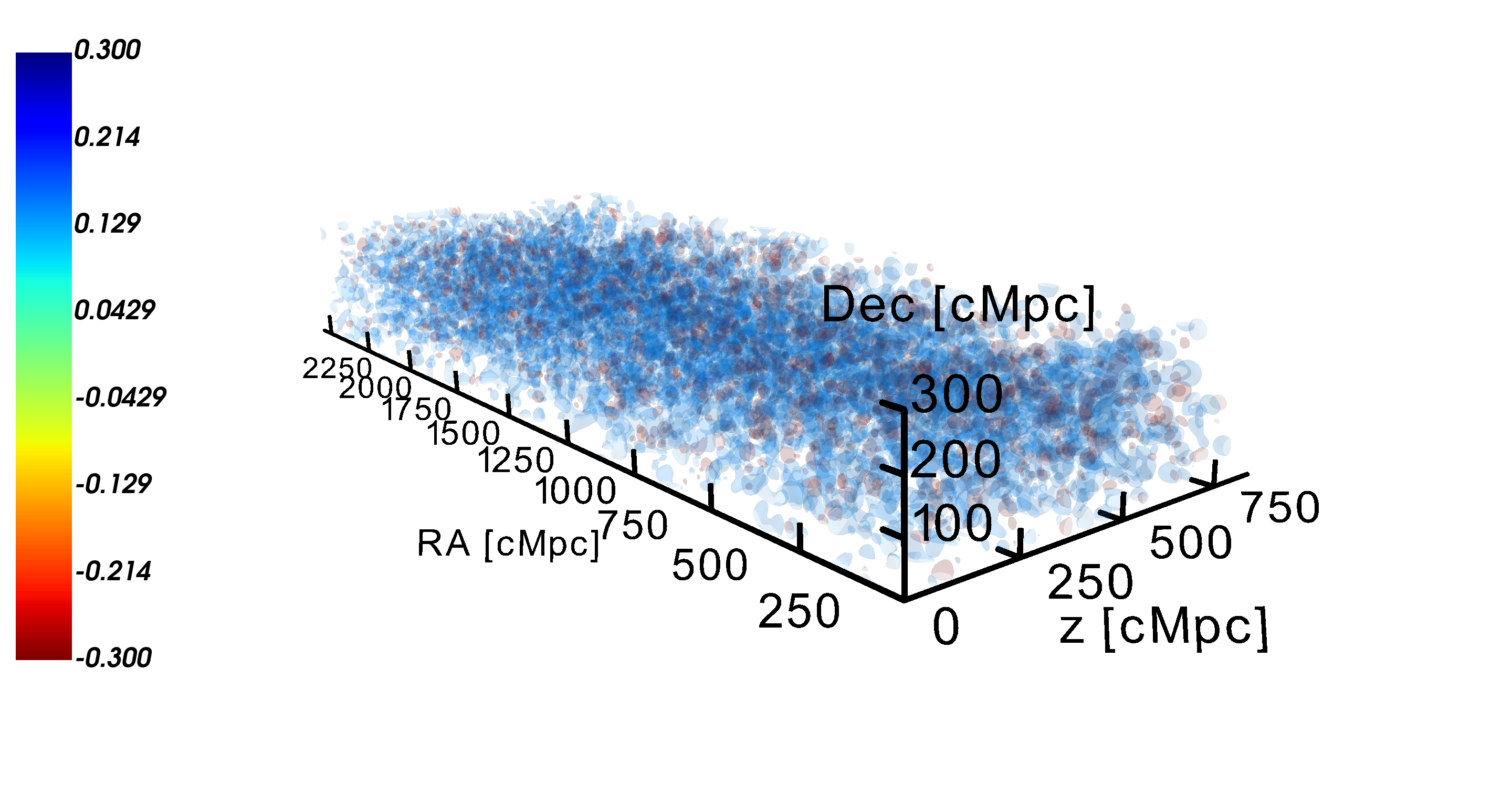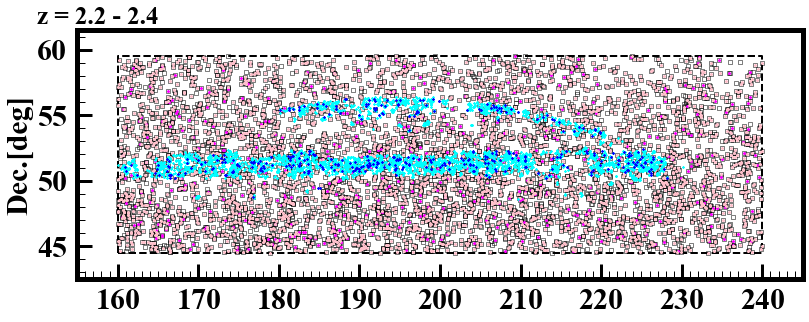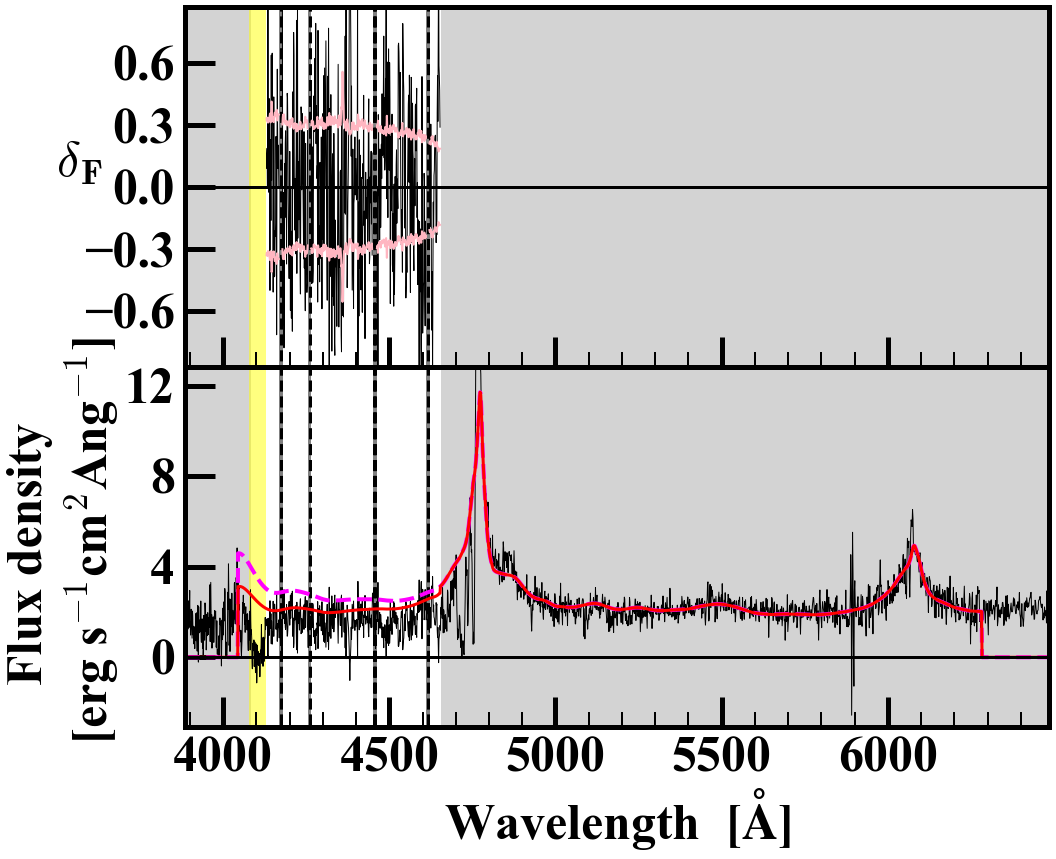Achievements & Publications
Cosmological-scale Lyα Forest Absorption around Galaxies and AGNs Probed with the HETDEX and SDSS Spectroscopic Data
Sun, Dongsheng, Mawatari, Ken, Ouchi, Masami, Ono, Yoshiaki, Yajima, Hidenobu, Zhang, Yechi, Abe, Makito, Bowman, William P., Cooper, Erin Mentuch, Davis, Dustin, Farrow, Daniel J., Gebhardt, Karl, Hill, Gary J., Liu, Chenxu, & Schneider, Donald P.
Abstract
We present cosmological-scale three-dimensional neutral hydrogen (H I) tomographic maps at z = 2-3 over a total of 837 deg2 in two blank fields that are developed with Lyα forest absorptions of 14,736 background Sloan Digital Sky Survey (SDSS) quasars at z = 2.08-3.67. Using the tomographic maps, we investigate the large-scale (≳10 h -1 cMpc) average H I radial profiles and two-direction profiles of the line-of-sight (LOS) and transverse directions around galaxies and active galactic nuclei (AGNs) at z = 2-3 identified by the Hobby-Eberly Telescope Dark Energy eXperiment survey and SDSS, respectively. The peak of the H I radial profile around galaxies is lower than the one around AGNs, suggesting that the dark matter halos of galaxies are less massive on average than those of AGNs. The LOS profile of AGNs is narrower than the transverse profile, indicating the Kaiser effect. There exist weak absorption outskirts at ≳30 h -1 cMpc beyond H I structures of galaxies and AGNs found in the LOS profiles that can be explained by the H I gas at ≳30 h -1 cMpc falling toward the source position. Our findings indicate that the H I radial profile of AGNs has transitions from proximity zones (≲a few h -1 cMpc) to the H I structures (~1-30 h -1 cMpc) and the weak absorption outskirts (≳30 h -1 cMpc). Although there is no significant dependence of AGN types (type 1 vs. type 2) on the H I profiles, the peaks of the radial profiles anticorrelate with AGN luminosities, suggesting that AGNs’ ionization effects are stronger than the gas mass differences.






 和 英
和 英